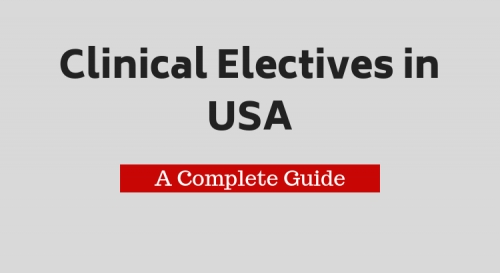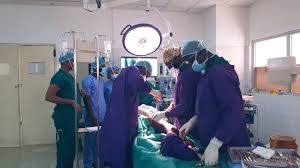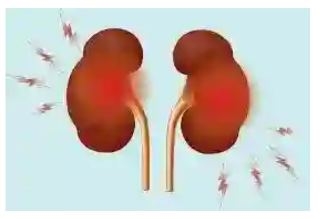Select a category
USMLE

Let us look at the sample NBME question below:
A randomized controlled trial is conducted to compare a new oral proton pump inhibitor with oral omeprazole for the prevention of recurrent duodenal ulcer bleeding. A total of 2000 patients with newly diagnosed duodenal ulcer who have had recent bleeding are randomly assigned to receive the new drug or omeprazole. After 1 month, results show that 4% of patients treated with the new drug have recurrent ulcer bleeding compared with 5% of patients treated with Omeprazole (p<0.05). Based on these results, how many patients would need to be treated with the new drug to prevent one recurrent duodenal ulcer bleed?
A. A. 10
B. B. 40
C. C. 50
D. D.100
E. E. 200
Dissecting the question
The question targets number needed to treat.
To answer this type of question asking “Number Needed to Treat” you need to remember Absolute Risk Reduction [ARR] (That is how much risk is taken away after exposure or treatment, ARR is gotten when the exposed group is subtracted from the unexposed group)
The formula for Absolute Risk Reduction (ARR): Unexposed group – Exposed group = ARR
To get absolute risk reduction from the question, we need the number of patients who were treated with a new drug (4%) and the number of patients treated with Omeprazole (5%).
ARR = 5 – 4 = 1%
Convert percentage to number = 1/100 = 0.01
The formula for Number Needed to Treat: 1 / ARR
Number needed to treat = 1/0.01 = 100
The answer is D.100

1)Jackson Park, Chicago
Contact Email:externship@hotmail.com
2)Mercy hospital st louis
Externship on merit and credentials.
Its free.
( Internal Medicine - Filled till December 2013. They accept applications on October 1st for January to May. Need Social Security and scores above 220, one month only).
www.mercygme.net.
Applicable only if you have US Social security number.
Observerships:
1)North Shore Medical Centre-Salem Hospital Program, MA in IM,
email CV to Program co-cordinator.
Link is http://nsmc.partners.org/residency/questions
2)Children's hospital of Pittsburgh: department of endocrinology
3)Cooper University Hospital: Pediatrics
Contact Lanzo-Jeanne@cooperhealth.edu
4)Texas, Good Shepherd Medical center,
Send email for observership to program coordinator, her email address given on frieda. they have usually 3 observers every month and no fees for observership
5)UMC Las Vegas - you'll need to find a faculty sponsor.
6)University of Florida Gainesville/Pediatrics,
Free of cost.
Need to find a sponsoring faculty.. the information is given on their website....
clerkship coordinator - Haltam Tabatha (tseay@peds.ufl.edu)
for one month only
http://residency.pediatrics.med.ufl.edu/resources/observing-shadowing-volunteering/
7)Alleghany General Hospital.
IM paid.
Contact Email: aghint@wpahs.org
http://www.wpahs.org/locations/allegheny-general-hospital/education-physician
8)Cleveland Clinic/Ohio/Pediatrics-
paid observership..
visit their website for more information.
9)Memorial Sloan Kettering cancer center observership,new york:
http://www.mskcc.org/cancer-care/healthcare-professionals/international-observership
10)Texas, Good Shepherd Medical center,
Send email for observership to program coordinator, her email address given on frieda.
they have usually 3 observers every month and no fees for observership.
11)Griffin hospital Connecticut has paid observership @500$/month.(needs official transcripts).
http://www.griffinmeded.org/Clinical-Observership.aspx
12)Boston Childrens Hospital:
http://childrenshospital.org/healthprofessionals/Site1392/mainpageS1392P95.html
NICU Observership for 1 month at Boston Children'sHospital...
contact person is Hossain Tanzeema...email is Tanzeema.Hossain@childrens.harvard.edu.
13)Ochsner medical center at New Orleans has free observerships,
if any of the faculty working there recommends the candidate.
14)CHM,children's ,Detroit-observer ship in ED,
no cost
contact email:JVelasco@dmc.org
15)USF infectious disease,Tampa,Florida paid observership(2000$)
16)Wayne state univ paid observership $1500/month
http://gme.med.wayne.edu/future/observership.php
(website says not offering now- i donno why-i knew people who have done recently too).
17)St Agnes hospital Baltimore MD-
In Int.Medicine 500 $/month if any faculty or resident recommend you for observership.
18)St. Vincent Hospital Worcester, MA - Observership -
free as long as one of the doctors agrees to it so email and call them
19)Mt.Sinai New York
Cardiology observership
free of cost-long waiting list.
So plan ahead. contact
Email: maria.directo@mountsinai.org
20)Mt.Sinai New York
PEDS - Hepatic transplant observership-500$/MONTH.
Sometimes they waive the fee(that is they give it for free).
contact email: sarah.hammond@mountsinai.org
http://icahn.mssm.edu/departments-and-institutes/surgery/programs-and-services/recanati-miller-transplantation-fellowship/residents-students-observers/observers
21)UT houston-observership
They have an application fee apart from processing fee too. You need to find a faculty sponsor.
http://www.uthouston.edu/global-health/observers/
An application processing fee ($350.00 USD if paid by money order or $375.00 USD if paid by wire transfer) will be charged to all Foreign Observers and Foreign Professional Trainees who will start their visit on or after September 01, 2012.
22)Tulane University,New Orleans
You need to find a faculty sponsor-Free Observership
23)UPMC -Offers observerships
you need to find a faculty sponsor
http://www.ccm.pitt.edu/clinical-visitor-observe
24)Miller school of Medicine, Miami
Paid observership(May be around 1500$).
http://imi.med.miami.edu/education-and-training/global-observership-program
25)Mayo Clinic,Florida
Does offer
Should plan ahead. You need to find a faculty sponsor.
http://my.clevelandclinic.org/florida/education/observerships.aspx
this website says- There is a $500.00 application fee which is non-refundable. Checks should be made payable to Cleveland Clinic Florida. In addition to the application fee we require a weekly tuition fee in the amount of $100.00. This fee can be paid on or before starting your rotation.
26)Cleveland Clinic
Two kinds of observerships
A)International physician observer program(doesn't need ECFMG cert-not meant for USMLE aspirants-but still give a try).
http://portals.clevelandclinic.org/cime/VisitingPhysicianPrograms/InternationalPhysicianObserverProgram/tabid/5479/Default.aspx
B)Global observership program.(ECFMG certificate required).
http://portals.clevelandclinic.org/cime/VisitingPhysicianPrograms/GlobalClinicalObserverProgram/tabid/5480/Default.aspx
27)Cleveland Clinic Epilepsy observer ship 3 months.
http://my.clevelandclinic.org/neurological_institute/epilepsy/for-medical-professionals/observership.aspx
28)Oklahoma state Medical Association - observership
3 months (Paid)
Application fee $250 + $900 for 12 weeks. not a University hospital,
No choice of speciality but you get placed in IM mostly.
http://www.okmed.org/index-2_internationalsection.html
29)Mercy St.Vincents ,Toledo, Ohio
Check their website.(Needs ECFMG certificate-contacts help-because many with ECFMG cert dint get).
http://mercymedicalresidency.org/index.php/observership/
30)UNMC,nebraska-various specialities
VERY VERY long Waiting list-Should Plan Really ahead-I am on waiting list still.
31)UNMC neurology observership,Nebraska:
http://www.unmc.edu/neurologicalsciences/observership_program.htm
32)Creigton University neurology observership program-(Needs step1,step2 ck score).
(FREE).
http://medschool.creighton.edu/medicine/departments/neurology/neurologyobservership/index.php
33)University of Kentucky-Neurology observership-see their website.(free)
http://ukneurology.com/education/observership.html
34)Massachusetts General hospital-Paid observership.
http://www.massgeneral.org/vep/observerships/
35)Moffitt's Cancer hospitals-Tampa,florida
http://moffittcancercenter.com/Site.aspx?spid=52228CED6507409E8C68B26ED85A9FC6
36)Cleveland Clinic Florida-Paid observership(Cost: $500 for application and $100/ week if selected.)
http://my.clevelandclinic.org/florida/education/observerships.aspx
37)Mt.Sinai Medical CENTER,Miami-Paid observership(I think miller school of medicine and this are almost same).
http://www.msmc.com/education/internation-observership-course
38)Drexel has a paid observership-around 7500$ for 4-6 weeks.
http://www.drexelmed.edu/Home/OtherPrograms/PhysicianRefresherCourse.aspx
39)Griffin memorial Hospital, Norman, Oklahoma - Psychiatry. Cost- $400, 1 month.
For more details contact program coordinator- Pam Melton, psmelton@odmhsas.org
40)Duke University, Durham- Oncology.
41)Univ Of Louisville,Psychiatry-4 month duration
42)MD Anderson cancer center,Leukemia department,4 weeks,
No charge,apply early.(They are not offering them now these days-Also i don't see any benefit in doing here).
43)Baylor college of Medicine, Texas- Pediatrics.
Contact Ms. Claudia Flores. cmflores@texaschildrens.org
(I am not sure whether they are offering it now a days.
44)University of Minessota observership- multiple specialties
website- http://www.med.umn.edu/gme/observinfo/home.html
45)Internal Medicine externship at Heart and Vascular institute in Detroit,
you can fill the application form on their website http://www.heartteam.com/externship.php......
they take some time to process the application around 2 months...
46)Pediatrics observership at New york at MDPEDS clinic..
U need to meet the doctor personally..
U can access the address on http://www.mdpeds.com/...
The doctors name is Dr. Daniela Atanassova-Lineva M.D. the clinic is in queens, Ny..
47)Michigan state university-Sparrow Hospital-Internal Medicine Observership.
They offer limited Obsies and Application time is single day-It was on April 30 this year.
Timings was from 8AM to 1.30 PM .See how narrow it is. (Lets see how it goes).
http://www.im.msu.edu/applicants/observership.asp
48)Baylor College of Medicine, Multiple Sclerosis Observership Program
contact email:vrivera@bcm.tmc.edu
49)Jackson Memorial Hospitals,Miami:
http://www.jacksonhealth.org/residents-fellows-observers.as
50)Florida Hospital,Orlando:
http://www.floridahospital.com/careers-education/observership
51)Case Western Univesity, Urology Observership:
http://casemed.case.edu/dept/urology/Visiting_Medical_Students_Observer_Policy.cfm
52)George Washington University Observership Program:
http://www.gwumc.edu/smhs/imp/medical-programs/international-scholars/graduate/observer-training/index.cfm
53)Henry Ford Hospital,Detroit observership
http://www.iihe.org/fpres/policymanual/OBSERVERSHIP.htm
54)Dana Farber Cancer Institute Observership:
http://www.dana-farber.org/Education-and-Training/Fellowships-and-Training-Programs/Observing-Clinical-Care-and-Research-at-Dana-Farber.aspx
55)Inova observership, Virginia:
http://www.inova.org/education-and-research/education/education-for-students/physician-observerships.jsp
56)Penn Medicine Observer program:
http://www.uphs.upenn.edu/gme/coordina/observer/index.html
57)Beth-Israel Deaconess Center,Observership Program:
http://www.bidmc.org/MedicalEducation/Departments/Medicine/Divisions/CardiovascularMedicine/ClinicalandResearchFellowshipTrainingPrograminCardiovascularDisease20082009/ApplicationProcess.aspx
58)Baptist Health South Florida: Observer program:
http://baptisthealth.net/en/facilities/West-Kendall-Baptist-hospital/shadowing/Pages/default.aspx
59)Childrens National Peds Observership:
http://www.childrensnational.org/ForDoctors/gme/observerships/
60)Seattles childrens hospital observership:
http://www.seattlechildrens.org/healthcare-professionals/education/observership/
61)Brigham and Women's Hospital, Boston, MA (http://renalobserver.org)
62)Texas- University Of Texas Health Science Center at Houston
Observership in Anesthesiology(free)/ Critical Care (500$)/ Infectious Diseases(1000$)
http://www.uth.tmc.edu/schools/med/imed/education/Observership/Observer.html

Surgery rotations at the EFTSH, Banjul, The Gambia was really interesting and impactful. Everyone was friendly and patient, a prerequisite for a successful rotation.
A Brief Opinion based on my experience.
The rotations were standard when you want to compare to similar rotations in countries like Nigeria, The Caribbean’s, etcetera (I was able to do some comparison with some friends in these countries).
The Consultants are really kind and understanding, they would try to teach you as much as you need to know.
It is very important that you study before you start your surgery rotations because your superiors (Consultants, Registrars, Medical officers and House officers) would expect that you already know a lot from Basic sciences and previous rotations.
They are going to ask you a lot of questions, don’t run away. Be bold, give answers to questions you know, attempt the ones who have an idea of and politely excuse yourself for those you have no knowledge.
Some of the consultants took note of their students, they noticed how much questions you answer during the rounds, they also notice your punctuality and probably many other salient characters I can’t point at now. That way they have a mental picture before the examination. The point is, you may earn your marks even before the examination day, so study before your rounds at least.
Clerking of patients, cannot be over emphasized. Practice clerking as often as possible, say at least one patient per day. You can clerk/follow up your patients for better understanding of the cases, this would boost your confidence for the long case examination.
Time management is really important in clerking, if you know the local languages (Wollof, Mandika, Fula etcetera) you are in luck.
Surgery rotation's most common/High yield topics.
I have compiled a list of the most popular/high yield topics that was encountered during our rotations, most would be tested during ward rounds, out patients and surgical procedures and others would be tested during the examination.
The list below may not be complete, but if you are able to cover most, I will bet on you for the student surgery examination whether it be in The Gambia, West Africa or The Caribbean’s (These I have knowledge of).
I will prepare notes on most of these topics and place the links here. Guide yourself with these topics and always check back to see if I have updated the links to my notes here. These notes would be of great help to you, especially in forming the base for your studies.
This list is in no particular order. You may read/order according to most common cases during your rotations (Ward rounds, surgeries and outpatients) as most questions asked during ward rounds are based on the cases on ground.
1. Pre-operative (Before surgery/operation) and Post-operative (after surgery/operation) management
2. General Physical Exam
3. Factors affecting wound healing
4. Wound classification
5. Process of wound healing
6. Factors affecting wound healing
7. Appendicitis
9. Classification of Diabetic foot
10. Ulcers
11. Description of Ulcers
12. Types of Amputations
13. Indications for Amputation
14. Complications of Amputation
15. Jaundice
16. Anatomy of the foot
17. Deep Venous Thrombosis (DVT)
18. Pulmonary Embolism and Virchows triad
19. Intestinal Obstruction
20. Complications of Intestinal Obstruction and their Treatment
21. Pneumothorax
22. Classification of pneumothorax
23. Curvesoirs sign
24. Peritonitis
25. GI bleeding
26. Hernia (Really high yield)
27. Urine output
28. Hirschprung disease
29. Peptic Ulcer Disease – types and complications
30. Cholecystitis
31. Pancreatitis
32. Gastric Outlet Obstruction (Inability of Gastric content to go beyond proximal duodenum)
33. Upper Motor Neurons and Lower Motor Neuron lesions (for the neurosurgeon)
34. Factors that impair/prevents Wound healing
35. Surgical site infection
36. Charcot Triad and Reynolds Pentad
37. Necrotizing fasciitis (Deep Spreading infection affecting the fascia planes)
38. Acute Abdomen
39. Gangrene (A type of Necrosis of body tissue. Types: Dry, Wet, Gas, Founier)
40. Septic foot
41. Spinal Injury (Motor deficits, Abnormal/Decreased sensations)
42. Cellulitis
43. Colon cancer
44. Transfusions (Whole blood, PRBCs, FFP, Cryoprecipitate, Platenlets)
45. Diabetes
46. The Diaphragm (Supply and anatomic relations)
Viva Examination focus
1. Resuscitation equipment
2. X-Ray (Chest, Head)
3. CT scan
4. Cannula
5. Catheter
6. Fluids & Crystalloids (Composition & Uses)
7. NG tube
8. Endotracheal tube
9. Surgical Instruments
Short case Examination focus
1. Neck swelling
2. Hernia/Groin mass
3. Breast mass
4. Hirschsprung disease
Neurology focus
I will suggest you pay attention to these topics for neurology.
I remember the neurosurgeon liked these topics. He even openly said he would not forgive anyone who fails to answer questions on the Glasgow Coma Scale.
1. American Spinal Injury Association (ASIA) classification of spinal injury
2. Dermatomes
3. Types of spinal cord injury
4. History and Physical Examination of the Neurologic system
5. Glasgow Coma Scale (GCS)
6. Hydrocephalus
7. Spina bifida and anencephaly
Please note:
This list covers only Surgery 1 rotations.
Advertisement

Answering Biostatistics questions for IFOM and the USMLE: Part 1
Let us look at the sample NBME question below:
A community public health department has a limited budget for new interventions and must decide between two options. Option A is to reduce exposure to an industrial chemical that increases the risk for leukemia from 0.5 per 100,000/year to 2.0 per 100,000/year. It is estimated that 30% of the working population in the community is exposed to this agent. Option B is to reduce exposure to a different toxin that increases the risk for aplastic anemia from 0.5 per 100,000/year to 50 per 100,000/year. It ¡s estimated that 5% of the working population is exposed to this toxin. The estimated cost of each intervention is US $740,000. It is assumed that each intervention program will have similar effectiveness in eradicating the exposure. The case fatality rates are similar for both diseases. Which of the following is the best rationale for the health department to use in selecting an option?
A) Option A because more fatalities will be prevented
B) Option A because more workers are exposed to the toxic agent
C) Option B because more fatalities will be prevented
D) Option B because more workers are exposed to the toxic agent
E) The best approach cannot be determined based on the information provided
Dissecting the question
- This question targets the topic: Relative Risk [Relative risk is a high yield topic]
- The quick formula for Relative Risk for this purpose is to divide:
Exposed group (or no treatment) / Unexposed group (or with treatment)
- What these kinds of questions ask, is for you to compare the risk of Option A relative to Option B.
- Every other information in the vignette isn’t needed to arrive at the answer.
- You can easily spot this type of question by looking for the keyword “Risk” when you are asked to compare one group to another (Just like the above question).
Solving for an answer:
From Option A (Risk for leukemia):
Exposed group = 2
Unexposed group = 0.5
Putting in the formula:
2/0.5 = 4% (Relative Risk of 4)
From Option B (Risk for aplastic anemia):
Exposed group = 50
Unexposed group = 0.5
Putting in the formula:
50/0.5 = 100% (Relative risk of 100)
So the Risk in Option B is 100% relative to that in Option A which is 4%.
It means it would be better to invest in an intervention that would reduce the risk of disease by 100% than to invest in one that reduces the risk by only 4%.
The answer is "Option C) Option B because more fatalities would be prevented".
It is not “D) Option B because more workers are exposed to the toxic agent” because we are working with the risk increased per year in each option (i.e 100,000/yr), we are not working with the percentages of workers exposed to the agents. The reason is, even though 30% of workers are exposed to Option A’s agent the risk of getting leukemia is 4%. For Option B, only 5% of the working population is exposed to it, but the risk of getting aplastic anemia is 100% from the calculation.
Take home:
When you meet any biostat question that wants you to compare risk in one group to another,
- Remember relative risk
- Extract exposed numbers and unexposed numbers from the questions
- Divide E (exposed) with U (unexposed) [E/U = RR]
- The group with the highest number has the more risk and vice versa.
- Every other information from the vignette may not be helpful
- All the methods or assumptions in these questions might not be perfect but if you grasp the concept, you'll find it easy to answer similar questions.
Reference:
1. Topic: Relative Risk. Book: First Aid for the USMLE step 1 2019. Public Health Sciences/Biostatistics section.

- Stones within the urinary tract
- Sites (CUUP)
i. UreteroVesicular junction (Where Ureter meets the bladder)
- Most common site
ii. Calyx
- Cup like extensions within the kidneys
- Cavity where urine collects before it flows through the pelvis, Ureter and into the bladder
iii. UreteroPelvic junction (UPJ)
- When the Pelvis meets the Ureter
- The Pelvis is wider than the ureter and drains the Kidneys into the ureter
iv. Intersection of Ureter and Iliac vessels (Near Pelvic brim)
*Pyridoxine deficiency may lead to hyperoxalaturia
Risk Factors of Nephrolithiasis (DULL HIM)
- Low fluid intake (Most common)
- Fam History
- Illnesses causing stones
- Loop diuretics and other medications
- Male gender (3x Female)
- UTIs (Urease-producing bacteria)
- Dietary (Low ca2+ and High Oxalate intake)
Mneimonic: DULL HIM
Illnesses causing kidney Stones
i. Gout
- Causes Uric acid stones
- Due to hyperuriceamia
ii. Crohn's disease
- Ileal dysfnx = Oxalate hyperabsorption
- Diarrhea also promotes the formation of Calcium-fatty acids salts = less ca2+ to bind oxalate in the intestinal lumen
- hypocitraturia and hypomagnesuria (they form soluble complex with calcium in the urine, increaes act of macromolecules eg Tamm-Horsfall protein, that inhibit ca oxalate aggregatn. citrate also helps bone formation)
iii. Hyperparathyroidism
iv. Type 1 RTA (Distal) - Renal Tubular Acidosis
Medications causing Kidney stones
i. Loop diuretics
ii. Acetazolamide
iii. Antacids
iv. Chemotherapy
Types of Kidney stones (SUCK)
1. Kalcium stones (Calcium)
2. Uric Acids
3. Struvite stones (AMP)
4. Cystine
Calcium Kidney stones
- most common (85%)
- Calcium Oxalate > Calcium Phosphate
- Bipyramidal (Envelope shaped) or Biconcave ovals
- Radiodense (Seen on Radiograph)
- Secondary to
i. Hypercalciuria
ii. Hyperoxaluria
iii. Hypocitraturia
- Treat with
i. Thiazide diuretics
ii. Citrate
iii. Low-Sodium diet
Causes of Hypercalciuria
- Inc Intestinal absorption of Calcium
- Dec Renal calcium absorption
- Inc Renal excretion of calcium
- Inc Bone resorption
- Primary Hyperparathyroidism
- Sarcoidosis
- Malignancy
- Vitamin D excess
Causes of HyperOxaluria (Mostly Malabsorption)
- Severe Steatorrhea
- Small bowel disease
- Pyridoxine def (Vit B6 def)
Uric Acid Kidney stones
- Second most common
- Caused by persistently Acidic urine (<5.5)
- They form Flat square plates crystals
- These crystals escape x-rays detection
- Associated with
i. Hyperuriceamia
ii. Gout
iii. Chemotherapy (Leukemia/Lymphomas)
- Diagnosis
i. Flat square plates
ii. Radiolucent images (CT scan, Ultra Sound, IntraVenous Pyelogram)
- Treatment
i. Alkalinization of urine
ii. Allopurinol
- URIC Acid stones
U = US can dx
R = Romboid (Flat square plates)/Rosettes shape
I = IVP can dx
C = CT scan can dx
- Acid = Acidic urine promotes URIC acid stones
Struvite Kidney stones (Ammonium Magnesium Phosphate stones)
- Also called Staghorn stones
- Radiodense crystals are formed (Rectangular Prisms)
- Common in pts with recurrent UTIs (due to urease +ve bacteria)
- Precipitates in Alkaline urine (Urea splitting bacteria convert urea to ammonia - Alkaline)
- Ammonia combines with Magnesium or Phosphate = Struvite stones
- may involve entire renal collecting system
Urea Splitting bacteria causing UTI (SPEK)
A SPEK in the UT = Staghorn/Struvite stone
Serratia
Proteus
Enterobacter
Klebsiella
- A SPEK in the UT is StruvitAL
Cystine stones
- least common (1%)
- Genetic predisposition = Cystinuria (Autosomal Recessive)
- Hexagon-shaped crystals (Sixtine - Six sizes)
- Can also staghorn
- Sodium Cyanide Nitroprusside test +VE
- Urine is acidic
- poorly visualized
- Cystine is poorly soluble
- PCT Cystine reabsorbing transporter losses fnx
- PCT defect causes poor reabsorption of COLA
i. Cystine
ii. Ornithine
iii. Lysine
iv. Arginine
- Treat with Low sodium, Chelating agents, Alkalinization of urine
Course of Kidney stones (StONE)
- Patient may pass out stone < half of a 1cm
- Stone > 1cm gets stuck
- Recurrence is common (within 10 yrs)
Features
Classic Presentation of Nephrolithiasis
- Sudden onset of Colicky flank pain radiating to groin
- Urinalysis = Hematuria
- Renal colic (due ureteral obstruction and spasm (Sudden, becomes severe, cant sit still, occus in waves or paroxysms, begins in flank and radiates anteriorly)
- Nausea/Vomiting (Due to severe pain)
- Hematuria (>90% of cases)
- UTIs
Diagnosing Nephrolithiasis
1. Laboratory
2. Imaging
Laboratory diagnosis of Nephrolithiasis
i. Urinalysis
- If kidney is associated pain + Hematuria + Pyuria = Stone with Concomitant infection
- Microscopic or Gross hematuria
- Assoc UTI (Pyuria/Bacteriuria - SPEK)
- Examine Sediment for Crystals
* Envelope/ Dumbbell/ Wedge shape = Calcium
* Romboid/Rosettes shape = Uric acid
* Cysine - Hexagonal shape = Cystine
* Coffin lid shape = Struvite
- pH
* Decreased PH (Acidic Urine) = Cystine or Uric acid stone
* Increased pH (Basic Urine) = Calcium phospahte or Struvite
Culture
- If suspect infectn
24-hour urine
- Renal fnx (Cr)
- Ca, Urate, Oxalate, Citrate levels
Serum xmistry
- Renal fnx (BUN and Cr)
- Ca, Urate, Oxalate, Citrate levels
Associated pain + Hematuria + Pyuria = Stone with Concomitant infection
Imaging
Plain Radiograph (KUB,ie of the Kidney, Ureter and Bladder)
- initial imaging
- Acidic Urine - Cystine and Uric stones not seen on plain imaging
Spiral CT without contrast
- Gold standard for all stones
IntraVenous Pyelogram (IVP)
- defines degree and extent of obstruction
- helps in deciding need for procedural therapy
- Not needed for dx of stones
Renal US (UltraSound)
- detects hydronephrosis or hydroureter
- false -ve in early
- low visual yield
- choice for pts who can’t receive radiation (Pregnancy)
Stone (Attempt to recover stone passed)
- Helpful in achieving
i. Analysis of the stone and determination of the cause
ii. Choice of treatment
iii. Prevention
iv. Reporting history
Treatment of Nephrolithiasis
1. General
2. Specific (Pain and Obstruction)
3. Preventive
General measures
- Tries to help the patient pass the stone with less pain, also treats underlying.
i. Analgesia
- IV Morphine, Parenteral NSAIDS (Ketorolac)
ii. Vigorous fluid hydration
iii. Antibiotics if UTI
iv. Consider Indications for admission
Indications for Hospitalization.
1. Pain refractory to Oral medications
2. Anuria (Most likey in a patient with a Single kidney)
3. Colic + UTI
4. Large stONE (>1cm)
Specific measures
- Based on Pain Severity
1. Mild-Moderate severity
- High Fluid intake
- Oral analgesia
- wait for stone to pass (Urine strainer)
2. Severe pain
- IV fluids
- KUB/IVP to find site
- If stone doesnt pass after 3 days = Urologist consult
Severe pain measure
- IV fluids + Narcotics
- KUB and IVP
- Urology consult if > 3days
If Obstruction + Persistent pain (refractory to Narcotics)
- Surgery (Breaks the calculus for spontaneous passage)
- Extracorporeal shock wave lithotripsy (Most common, > 5mm, < 2cm stones) - ESWL
- Percutaneous nephrolithotomy (If Lithotripsy fails, best for >2cm stones) - PCNL
Shock Wave Lithotripsy (SWL) is the most common treatment for kidney stones in the U.S. Shock wavesfrom outside the body are targeted at a kidney stone causing the stone to fragment. The stones are broken into tiny pieces.
Percutaneous nephrolithotomy is a minimally-invasive procedure to remove stones from the kidney by a small puncture wound through the skin. It is most suitable to remove stones of more than 2 cm in size and which are present near the pelvic region. It is usually done under general anesthesia or spinal anesthesia.
Prevention of Kidney stones
i. Dietary
ii. Pharmaceuticals
i. Dietary measures
- High fluid inake
- Limit animal protein (esp in hyperuricosuria)
- Limit calcium intake (esp in calcium stone
ii. Pharm measures to prevent Stones
* Thiazide diuretics
- Reduce urinary calcium (esp in Hypercalciuria)
- Allopurinol (Prevents recurrent uric acid stones)

welcome to my page my Great readers, in this article I am here to educate you about some foods you are probably consuming excessively but may not know how dangerous they are to your kidneys.
WHAT IS KIDNEYS?
The kidneys are two bean-shaped organs, each about the size of a fist. They are located just below the rib cage, one on each side of your spine. Healthy kidneys filter about a half cup of blood every minute, removing wastes and extra water to make urine.
In all human being, they are two kidneys present one at the right hand side and other at the left hand side. And Please remember that they is no body who can live without present of two healthy kidneys.
The kidneys are a very important organ in the body of every human being. They are two bean-shaped organs, each about the size of a fist, located just below the rib cage, one on each side of your spine. The kidneys are responsible for getting rid of waste products, drugs, and toxins through our urine.
Although so many people know that a major function of the kidneys is to remove waste products and excess fluid from the body, but the kidney still perform all functions which may go beyond this alone.
FUNCTIONS OF THE KIDNEYS
1# Healthy kidneys are responsible for getting rid of waste products, drugs, and toxins in your body system which passes through our urine.
2# Healthy kidneys also help in removing wastes, control the body's fluid balance, and keep the right levels of.
3# Healthy kidneys also help in filtering about a half cup of blood every minute, and removing wastes and extra water to make urine
4# your kidney help your body in maintaining Electrolyte balance.
5# Its serve in controlling your blood pressure.
6# Healthy kidneys serve as an organ in producing the hormone called Erythropoietin.
7# healthy kidney help in controlling Acid and base balance in the body system. ETC.
KIDNEYS DISEASES
They are different kinds of kidney diseases but I am going to discuss few among them. Chronic kidney disease, kidney stone, polycystic kidney disease and urinary kidney infection ETC. The most common form of kidney disease among these is Chronic kidney disease, Is a long-term condition that doesn’t improve over time. It’s commonly caused by high blood pressure
SYMPTOMS OF KIDNEY DISEASES
1# you will experience frequent unrination
2# fatigue (tiredness )
3# you will experience Trouble Sleeping (difficulty in Sleeping )
4# you will experience Bad appetite
Haven known some of the functions and important with symptoms of an Affected kidney, I can now go straight to 3 things you need to avoid excess intake of them if you want to live long.
STOP DRINKING TOO MUCH ALCOHOL
Please pay maximum attention to this message, excessive consumption of alcohol can be very bad and dangerous to your kidney. So many People are victim of this particular act because of addiction.
Drinking too much Alcohol causes changes in the function of your healthy kidneys and makes them less able to filter the blood. Which can easily damage the kidney. Excessive consumption of Alcohol also affects the ability to regulate fluid and electrolytes in the body. When alcohol Dehydrates that is, (dries out) the drying effect can affect the normal function of cells and organs, including the kidneys.
Too much intake of Alcohol affects the kidneys' ability to keep the correct balance of water and electrolytes in the body system which lead to kidney infection.
Although if you want to Drink alcohol, little quantity is enough because Moderate alcohol consumption has been shown to be protective in the formation of kidney stones. But you Drink it beyond moderate level, it can easily harm your kidney by causing chronic kidney disease.
STOP ABUSING PAINKILLERS
We are in a society today where painkillers medicine are been abuse by so many People in the society most especially young ones.
Whenever you used pain killers medicines improperly, it can cause different problems in your body, including the kidneys. According to a research, some of the cases of chronic kidney failure each year may be caused by the overuse or abusing of these painkillers drugs.
Taking one or a mix of these medicines daily over a long time without the doctor's prescription may cause chronic kidney problems. That is,. Painkillers that combine 2 or more medicines (such as, aspirin and acetaminophen together) with caffeine or codeine can mostly likely to harm your kidneys. Please take note of that.
STOP EATING TOO MUCH SALT
Salt is good for the body but when they are consume excessively, they can equally harm the kidney. Hope you are following? Many People today eat much quantity of salt without knowing how harmful they are to the kidneys.
high salt intake has been shown to increase the amount of protein in the urine which is one of the major risk factor for the decline of kidney function. There is also increasing evidence that a high salt intake may increase deterioration of kidney disease in people who already have kidney problems.
Salt is also a strong solvent which May likely contain high sodium, and has the ability to dehydrate the kidney when consumed excessively. Please I beg you with the name of God, look for a better supplement for your food in order to limit salt intake because it can cause a big harm to your kidneys.
All images used above are for illustrative purpose. Please share this message to the society and Don't forget to the follow me for more information on my page THANKS.
Advertisement
Advertisement
 Peter
Peter Guest Friendly Dr
Guest Friendly Dr AKbon
AKbon